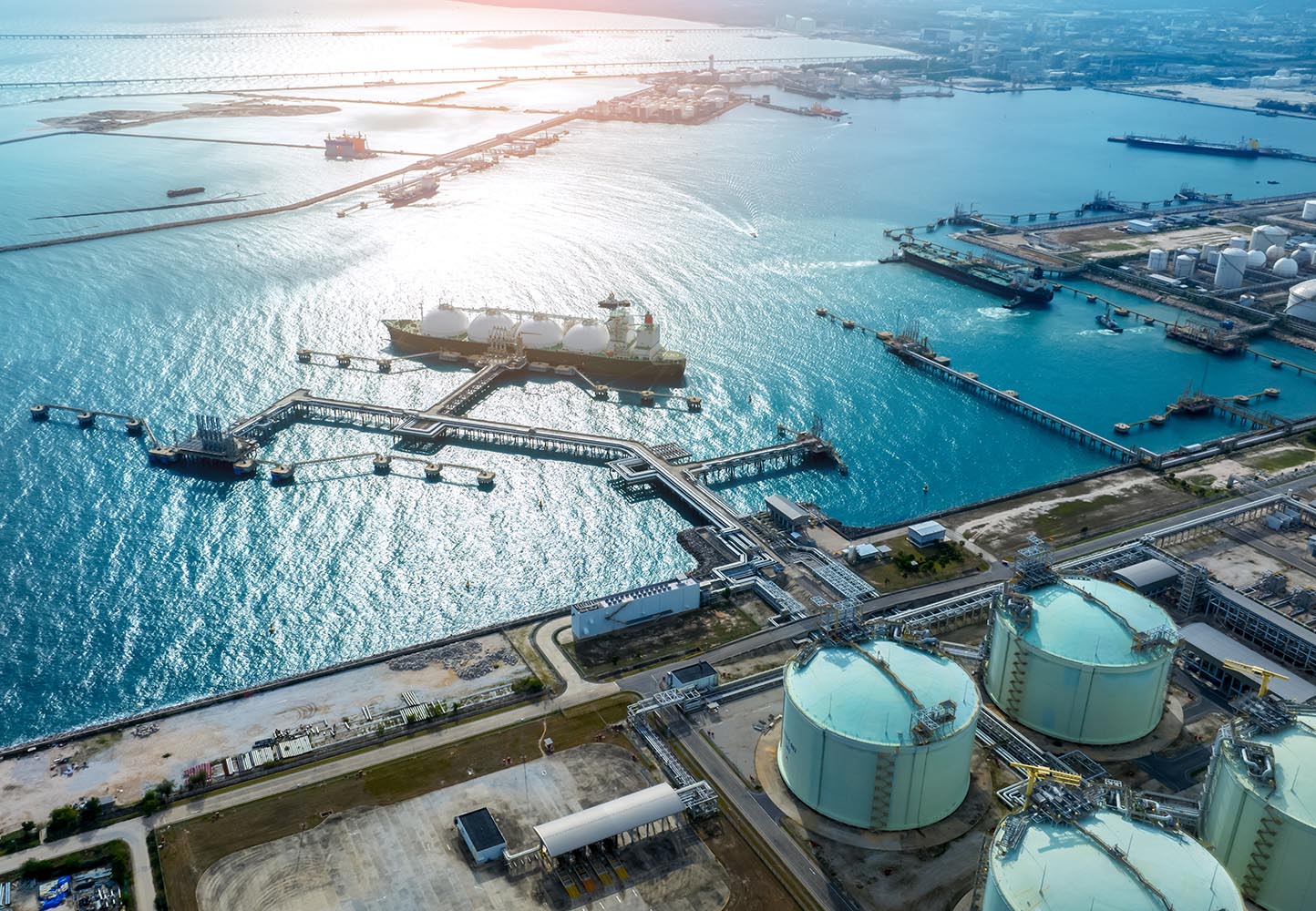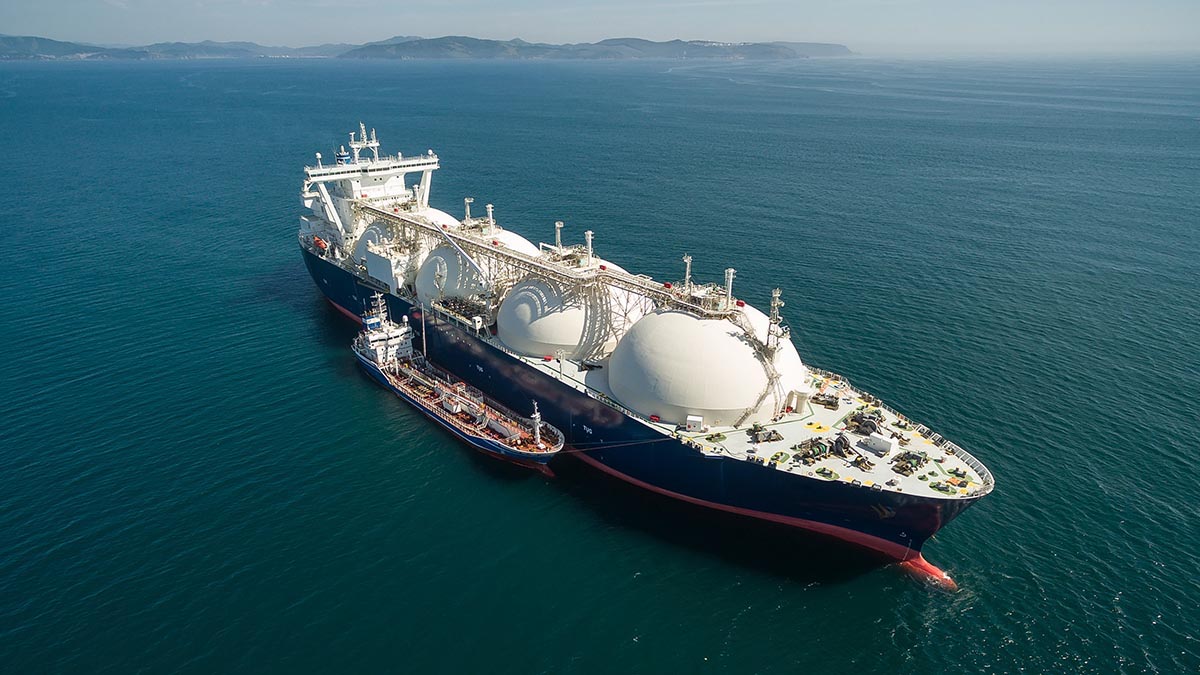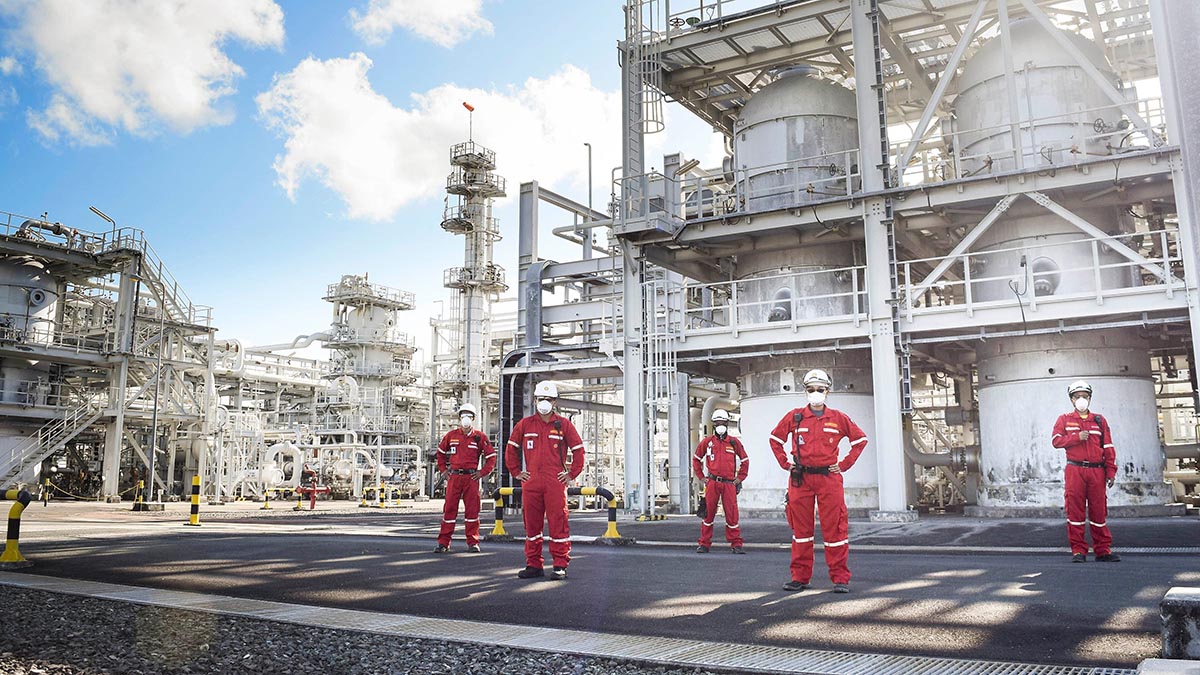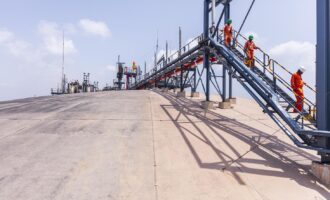
Asia’s LNG demand surge powers global decarbonisation
In the global push towards decarbonisation, natural gas has emerged as a crucial player, often hailed for its (relatively) clean-burning characteristics. Compared to coal or oil, burning natural gas emits fewer conventional air pollutants and significantly less carbon dioxide (CO2) per unit of energy produced. According to data from the Energy Information Administration (EIA), approximately 117 pounds of CO2 are generated per million British thermal units (MMBtu) equivalent of natural gas, in stark contrast to over 200 pounds per MMBtu of coal and more than 160 pounds per MMBtu of distillate fuel oil.
When you are located a long way from gas fields, natural gas pipelines are expensive and impractical. Liquefied natural gas (LNG) is natural gas that has been cooled to very low temperatures to convert it into a liquid state. The process reduces the volume by about 600 times for easier and safer storage and transportation. LNG is a versatile fuel that enables heating, electricity generation and industrial processes and is an essential bridge to a low-carbon future. Gas offers grid stability, enabling a higher share of renewables in power generation.
Despite a challenging global environment, South and Southeast Asia are poised for significant economic growth over the coming years. The Asian Development Bank (ADB) forecast Southeast Asian growth of 4.7% in 2024 in a recent report. This economic advancement demands a significant increase in energy.
However, South and Southeast Asia are facing declining domestic gas production, according to the Shell LNG Outlook 2024. The Asian regions are confronted with ageing oil and gas reservoirs and mature legacy projects where volumes are expected to continue to decline over time. Several newer projects in the region have been plagued by delays, and Asia is facing increasing competition from new gas frontiers, such as Africa.
Arguably, the most precarious energy situation is in The Philippines. The region is heavily reliant on the Malampaya gas field, its sole natural gas source since 2001, with some reports suggesting it is set to run dry within the decade. Indonesia, too, faces dwindling gas production. Jakarta, the Indonesian capital, suffered a 24% drop in gas production over the past decade, according to Vanda Insights, a Singapore-based global energy market intelligence provider. Vietnam has also recently turned to LNG imports to backfill domestic gas declines.
Shell is a prominent global LNG supplier engaging in all facets of the value chain and ranks among the largest LNG shipping operators worldwide. The annual Shell LNG Outlook, now in its eighth year, analyses pivotal trends in the global LNG sector, providing insights into past developments and future supply and demand dynamics.
According to the outlook, South and Southeast Asia are emerging as major LNG importing regions. Surging power demand is forcing an increase in LNG imports to offset domestic gas production decreases and support economic growth. The outlook highlights a need for significant investment in gas import infrastructure in these emerging Asia nations to access the LNG these countries require. Industry and buildings are the key drivers of natural gas demand in emerging Asia, with LNG expected to meet more than 75% of this growth.

In 2023, LNG comprised 14% of global natural gas demand, with global LNG trade rising by 7 million tonnes to reach 404 million tonnes, according to Shell. Natural gas has already peaked in some regions. However, the latest industry estimates suggest global LNG demand could surge to up to 685 million tonnes annually by 2040, representing growth of more than 50%. This upward trajectory is expected to continue well into the 2040s, with LNG playing a complementary role in the expansion of wind and solar power.
Strengthening LNG demand in emerging Asia is a key pillar of LNG growth moving forward, however, China’s industrial decarbonisation is the preeminent driver of the global LNG market. “China is likely to dominate LNG demand growth this decade as its industry seeks to cut carbon emissions by switching from coal to gas,” said Steve Hill, executive vice president for Shell Energy.
China imported 72 million tonnes of LNG in 2023, overtaking Japan as the world’s largest LNG importer again. Japan has witnessed an 8% drop in LNG imports, alongside nuclear power restarts, according to data from the Ministry of Finance. In July 2023, Takahama Nuclear Power Plant resumed operations after a 12-year hiatus.
Despite modest economic growth by China’s standards, gas demand (+8%) outpaced the economic recovery. The long-term gas and LNG demand outlook for China is strong as industrial coal-to-gas switching accelerates.
The outlook noted that LNG prices stabilised in 2023 from the unprecedented volatility over the previous couple of years. However, supply remains tight, and prices remain significantly higher than 2017 to 2020.
Increasing reliance on LNG imports is not without risk for price-sensitive Asian economies. For those with untapped gas reserves, increasing extraction efforts will be imperative to effectively meet demand and bolstering their natural gas production could prove beneficial in ensuring supply stability and affordability.
The Shell outlook emphasised a range of drivers that have helped stabilise the LNG market in 2023 including the modest Chinese economic recovery, weak European demand and energy savings, high gas inventories in Europe and Asia, and strong nuclear generation in France, Japan and South Korea. Shell also noted the favourable impacts of mild winter temperatures in gas-heating-reliant countries.

However, it remains a difficult market. Limited new LNG supply continues to constrain growth. In the medium term, latent demand in Asia will consume any new supply. The United States is now the largest LNG exporter, shipping 86 million tonnes in 2023. Shell anticipates North America will come online with additional capacity this decade, but the timings remain uncertain. By 2030, the U.S. is expected to meet almost one-third of global LNG demand. Australia and Qatar are currently the next major LNG exporters, each supplying 80 million tonnes in 2023.
In Europe, gas remains critical for energy security. Nevertheless, while volumes are growing in Asia, an overall drop in gas use was evident in Europe. LNG imports remain consistent with the previous year, at approximately 120 million tonnes. With the drop in Russian pipeline exports, as the Ukraine war continues to rage, Europe is expected to continue to pay top dollar for LNG supplies, which has a knock-on effect for the rest of the market.
In Europe, gas remains critical for energy security. Nevertheless, while volumes are growing in Asia, an overall drop in gas use was evident in Europe. LNG imports remain consistent with the previous year, at approximately 120 million tonnes. With the drop in Russian pipeline exports, as the Ukraine war continues to rage, Europe is expected to continue to pay top dollar for LNG supplies, which has a knock-on effect for the rest of the market.








